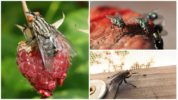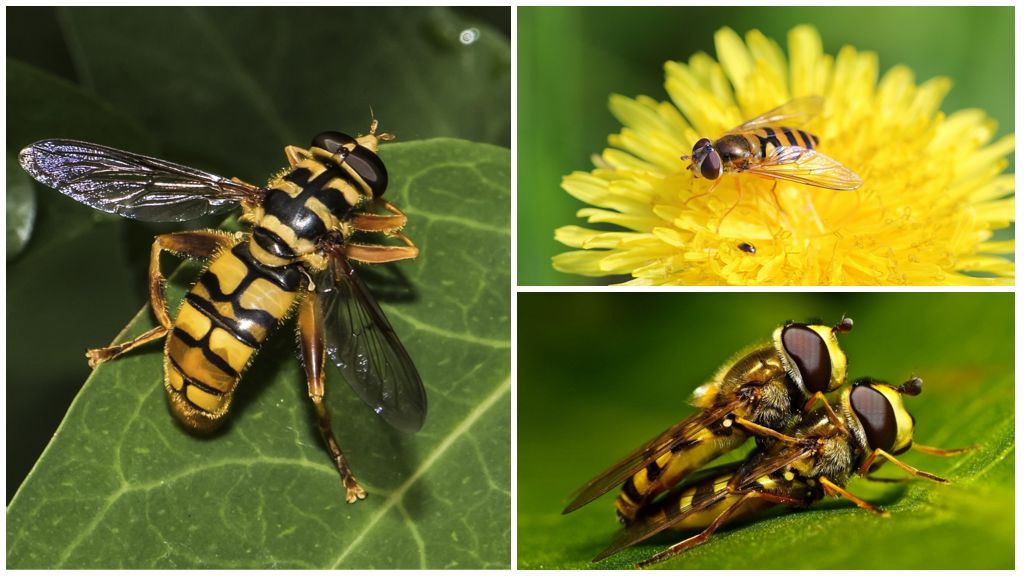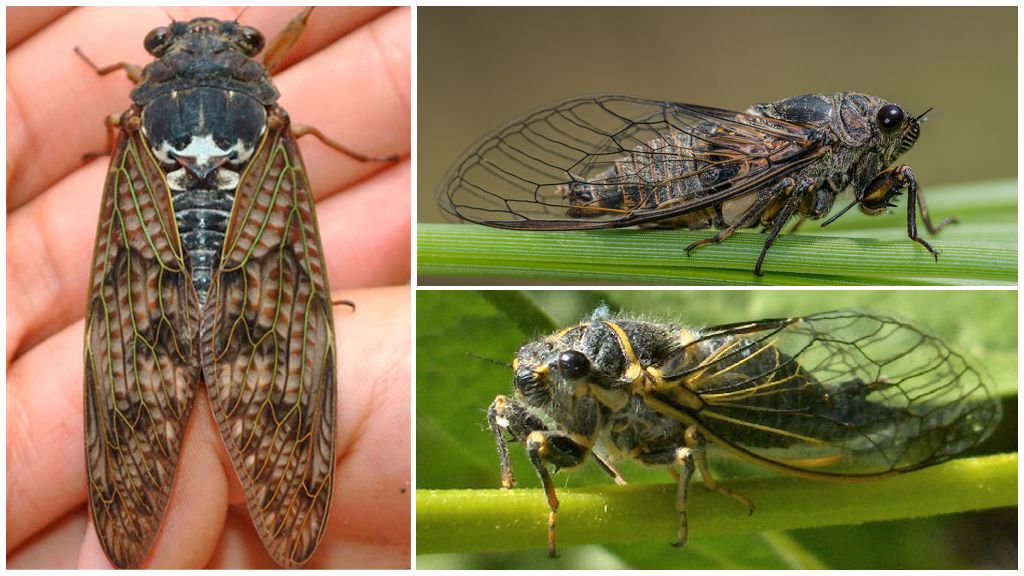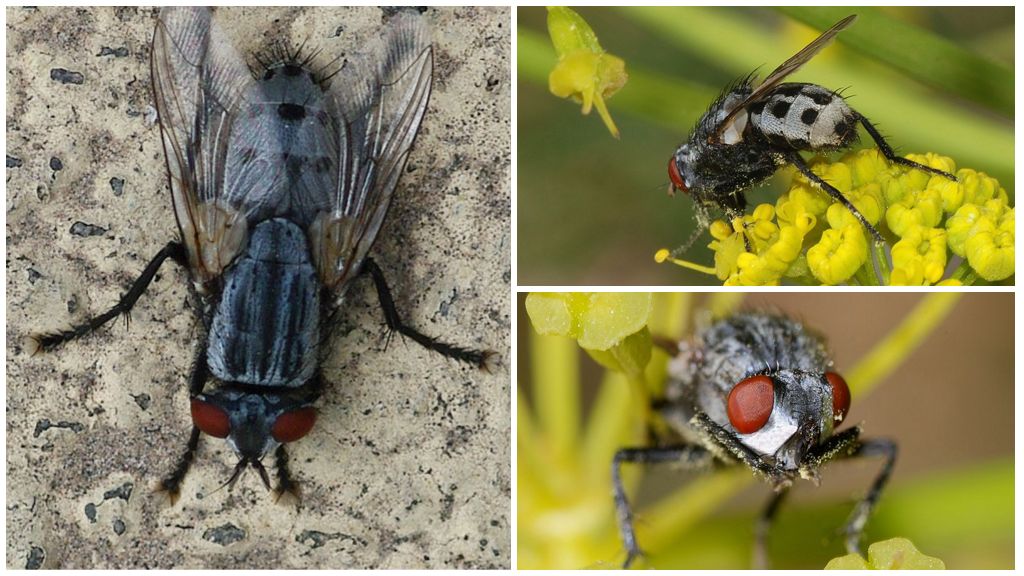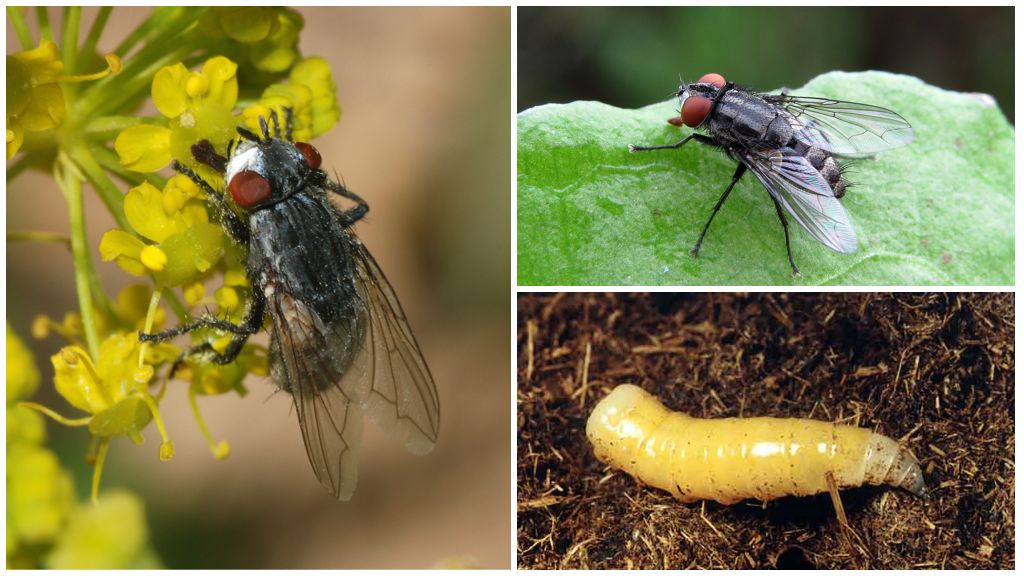- Housefly
- Propagation of housefly
- House fly
The housefly in Latin sounds like Musca domestica. Diptera from a large family real flies. A synanthropic creature is almost never found in nature; it lives side by side with a person. He leads a daily lifestyle, multiplies rapidly, is a carrier of dangerous diseases. There are 2 species in Russia - the common housefly, the southern one.
Description of appearance
Both the rural and urban residents know what the fly looks like. Fly structure can be described like this:
- The body size of an adult reaches 8 mm.
- The color is gray, closer to black.
- On the upper body 4 longitudinal stripes of black color, the lower part of the abdomen is yellow.
- The surface of the body is covered with numerous thin hairs.
- There are small antennae on the head.
- Well expressed complex eyesproviding broad horizons in different directions. Red-brown color. In females, the distance between the eyes is somewhat wider.
- Two pairs of transparent wings are located along the body. The second pair is underdeveloped - the ground beetle, make a sound during the flight, and also provide fading in the air.
On a note!
The fly is called a miracle of nature, due to its flying abilities. During the flight often changes the trajectory of motion, freezes in the air, holds on the ceiling upside downable to cover 3 km without transfers speeds up up to 6.4 km per hour.
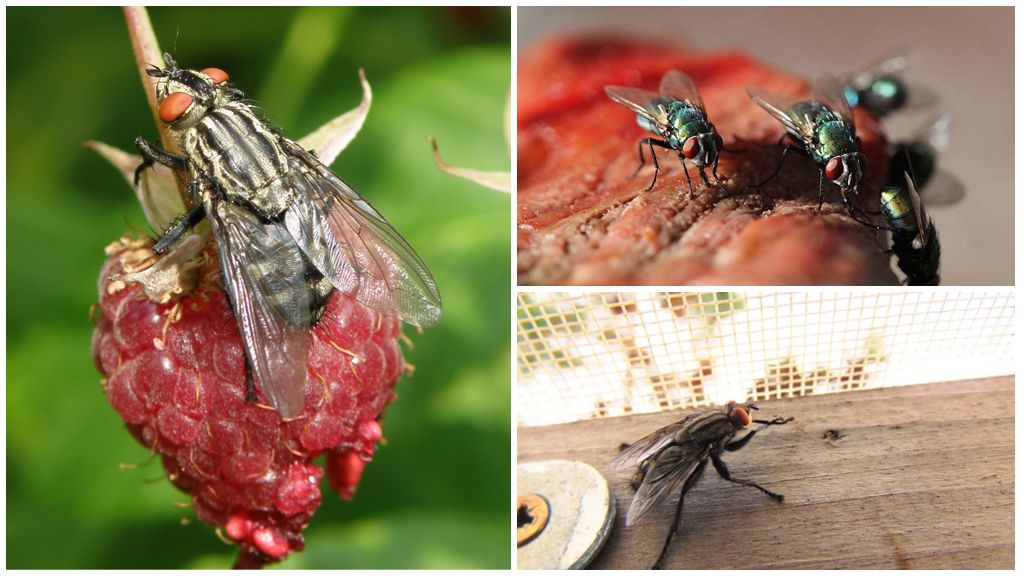
Nutrition
Domestic fly leads a daily life, calms down with the onset of twilight. In the daytime looking for foodlays eggs. Housefly - a polyphage, feeds mainly on liquid food. Favorite dishes - fruit juices, jam, honey, syrup. In severe cases, when there is no other food, it eats sugar, cookies, bread crumbs, sweets.
On a note!
The oral apparatus is piercing-sucking, but it cannot bite through human skin. A room, house fly does not feed on blood, they do it autumn lighters. Outwardly, they are very similar, so a person does not feel the substitution. Unlike a home cousin, the oral apparatus is equipped with sharp scales that perform the function of teeth and gnaw through human, animal skin. Slight differences in appearance - the wings are spread out to the sides.
The digestive system, as such, is not. Digestion of food occurs outside. The same feature is present in larvae. Initially, the insect releases a special secret - saliva, which dilutes food. After which the housefly quietly absorbs the liquid product. It takes more effort to digest solid feeds, so insects do not really like such food.
Breeding
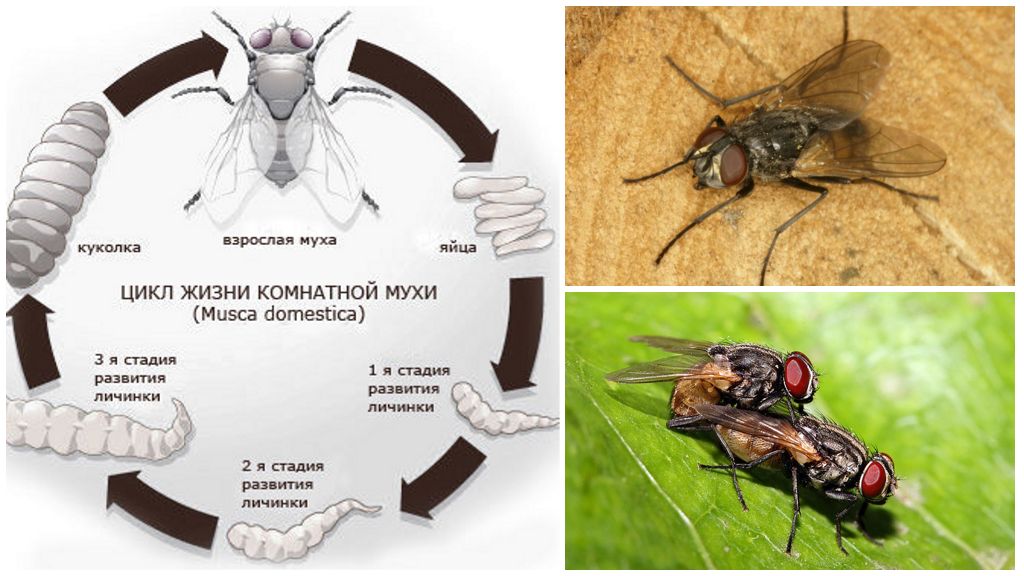
The female becomes sexually mature 24-36 hours after exiting the pupa. Lays from 70 to 120 eggs per day. Masonry is done in heaps or one at a time. The life expectancy of an adult is from 8 to 20 days at an air temperature of +20 - +23 degrees Celsius. In some cases, a sexually mature individual survives up to 60 days. In all his life he manages to give life to at least 6 generations.
On a note!
Depending on climatic conditions, the female lays from 600 to 2000 eggs.
Places for masonry - rotten vegetables, fruits, plants, food waste, waste, excrement. The size of an egg is about 1 mm, even in the presence of a whole masonry, it remains invisible to humans. Development takes 8-50 hours. Larvae are white worms called maggots.The size of individuals of the first generation is about 1 mm.
Egg hatched larvae live in a semi-liquid environment, feed on the mass into which the female laid her eggs. Eat around the clock, grow fast. They grow up from 3 to 25 days. During this time, they molt three times, increase in size to 13 mm. After three molts, the maggot creeps into a dry, dark place, pupates. After 3 days, an adult appears.
Features of life
Up to 20 generations of house flies are replaced per year. With the onset of cold weather, the insect climbs into the cracks, falls asleep. By the end of summer, they become sleepy, inactive, vulnerable. With the onset of the first frosts disappear altogether. The insect freezes, metabolic processes slow down, the housefly falls asleep. With the onset of the first warm days, with an increase in air temperature to +10 degrees Celsius, he wakes up and continues to live.
Interesting!
In winter, in a warm room, when a bright sun shines outside the window, the insect can wake up, get out of the cracks. But for a long time its activity does not last - it either kills a person or falls asleep again.
The homeland of housefly or housefly is the steppes of Central Asia. This species is ubiquitous. In the wild does not live, lives in a house, apartment, utility rooms.
Harm and Benefit
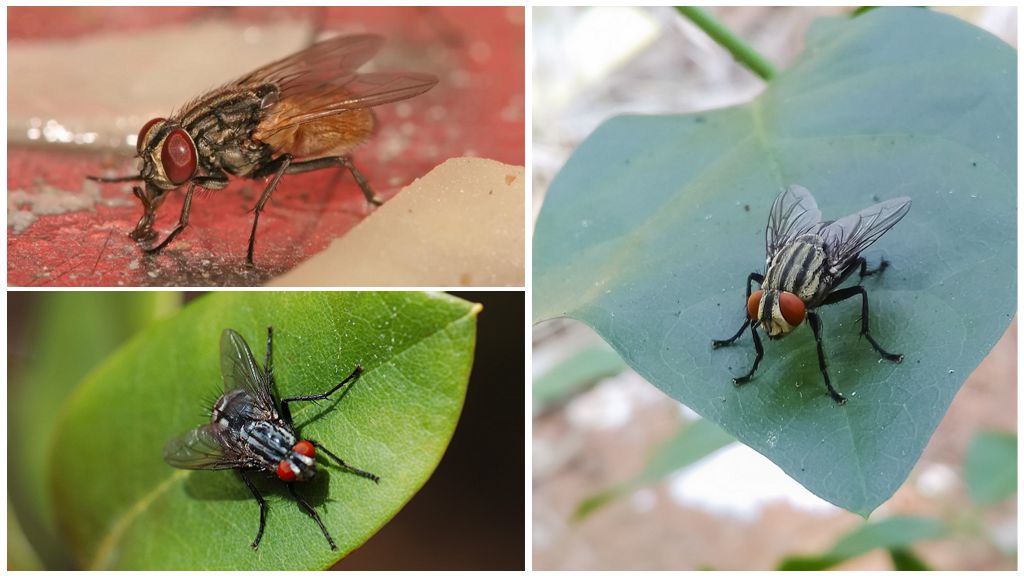
House flies greatly annoy people with their presence. Their annoying buzz makes you nervous. The situation is aggravated by the fact that the pest is difficult to catch, kill. No sooner did a man swing his sword, as the housefly had already flipped off.
However, this is not only harm. Insects live in an environment that is teeming with pathogens - feces, slops, trash cans, rot products. On the legs they carry E. coli, infections, are a distributor of dangerous diseases, worms.
Larvae when ingested with food can cause myiasis of the internal organs, eyes. Full life cycle the parasite does not pass, but during its presence in the body causes significant harm. With intestinal myiasis go out with vomit, feces. If the larva continued to develop in the eye, surgery is required, complications are possible, up to complete loss of vision.
But man figured out how to make even these flies to benefit. Maggots are used as food for pets - amphibians, fish, lizards, birds. Used as a bait for fish. There is a special craft for breeding maggots in special conditions. After purchasing live food, keep it in the refrigerator to prevent pupation.
